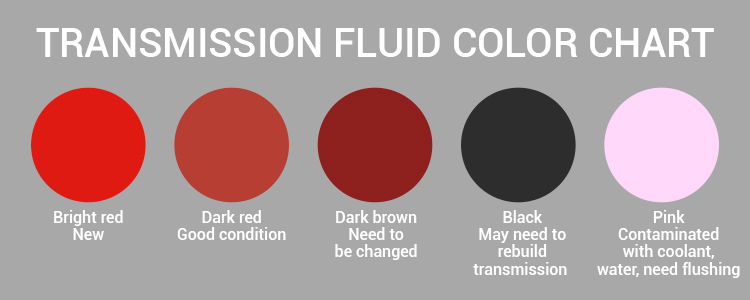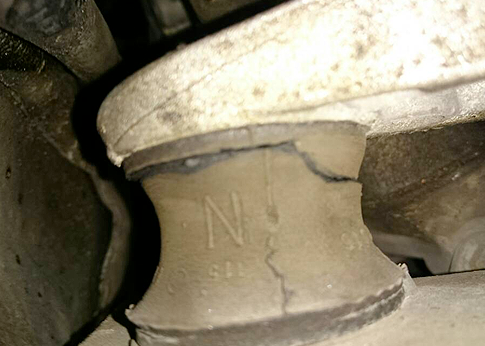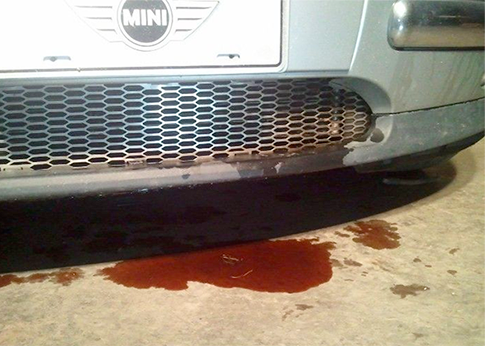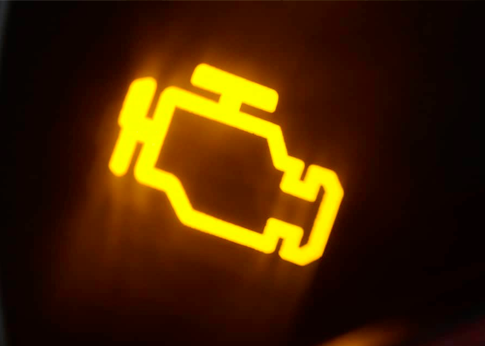Last Updated on April 4, 2024
If you’re a car owner, it’s important to know the signs of a bad transmission. A bad transmission can lead to costly repairs, so it’s best to be proactive and catch any problems early on.
In fact, transmission problems are one of the most common issues that car owners face. Thankfully, by catching problems early and getting them resolved you’ll likely prevent a minor problem from becoming a major one.
The six most common signs that your transmission is in trouble include:
- Whining, clucking or grinding noises from the transmission area
- Worn or broken transmission mount
- Burning smell
- Fluid leak
- Delayed shifts or gear slippage
- Check engine light
The last thing you want is for a $150 transmission fluid replacement to progress into a $3,000-$5,000 transmission repair. So, if you’re concerned about your car’s transmission health, keep reading. In this guide, we will cover all six of the most common symptoms.
Whining, Clucking or Grinding Sounds
If you hear sounds coming from your transmission, it’s an indication something is wrong. A whining or grinding noise can indicate problems with the gears. Grinding sounds may mean there are worn out parts that need replacement. This may occur when putting the car into drive or reverse, or may happen only while driving and the car is shifting between gears.
But don’t worry, a whining and grinding noise is typically an indication that the transmission fluid is low or very old. The tranny fluid is responsible for lubricating mechanical parts and keeping them from scraping and wearing prematurely. In a worst-case scenario, if you continue to drive with low fluid in your transmission for too long then it could overheat and cause more damage.

Check the level of the fluid and its appearance to figure out whether this could be the problem. The fluid should be red or dark red in color. However if it’s cloudy, brown, or black, then the fluid may be contaminated or old and needs replacement.
Clunking Sounds
Clunking sounds can be caused by a bad sensor. Transmissions are controlled by computerized sensors. If any one of these sensors is faulty, it could be sending incorrect shifting or speed information to the vehicles computer. As a result, the tranny will no longer know when to shift the transmission’s gears.
Your dealership or mechanic will be able to test these sensors and replace if faulty. Thankfully, sensors are relativity inexpensive.
Worn or Broken Transmission Mount

If your transmission mount is broken or loose it can cause some serious clunking or clanking issues. You may hear these noises whenever you make a change in speed or when you put the car into drive or park. Or, you may experience excess vibration while the engine is running. A worn or broken mount allows for unnecessary transmission movement.
Tranny mounts should last between 5-7 years, and it’s a good idea to have them checked regularly during every oil change.
Burning Smell
A burning odor inside and outside the vehicle is never a good thing. Fresh transmission fluid tends to smell sweet or tart. However, when that smell turns burnt it means your transmission fluid has broken down and the system is running hot. This is likely caused by old or lack of tranny fluid.
Checking the transmission fluid level is the first thing you will want to do. If it’s low, that’s the cause of the burning smell. If the fluid is brown in color, it’s likely old and needing replacement. You will want to have your transmission fluid flushed as well as the cooling system checked.
Pro Tip: When the tranny fluid begins to smell like burnt toast, it means your transmission is likely overheating and requires the attention of a professional mechanic.
Fluid Leak

If you suddenly begin to notice red fluid puddling underneath your car, then your transmission seals are failing. This is a good indication of an overheated transmission, which causes seals to dry out, shrink, and crack. This results in the fluid seeping from the transmission case and ending up under the car.
Leaking transmission fluid is a clear sign of a bad transmission. If ignored, can become a big problem and may lead to even costlier issues. However, it’s not recommended that you drive with this kind of leak. Doing so for an extended period of time may cause permanent damage. Get that leaking transmission checked right away!
Delayed Shifts or Gear Slippage
Modern transmissions are designed to shift quickly and operate as efficiently and smooth as possible. When you being to notice this is no longer the case, something is wrong. Signs of a bad transmission typically start to become apparent when you begin to experience delayed shifts or slipping gears.
Delayed Shifts Symptoms
If you find yourself trying to pull out into traffic, but instead of having instant power the tranny doesn’t engage or hesitates. Or maybe the tranny takes longer than it should for the car to shift. Then as you begin to accelerate the RPMs just seem to hang. This can also occur when slowing down, and you’re left with little or power once you do.
Gear Slippage Symptoms
Gear slippage is a big cause of transmission problems. This means the car will sometimes shift gears for no reason, even if you’re using cruise control. It may make the RPMs climb or drop unevenly while driving at speed with your foot off the accelerator pedal.
If you are experiencing either delayed shifts or gear slippage, then don’t panic. This could simply be a lack of transmission fluid. If you find that adding more transmission fluid doesn’t correct these problems, then it’s possible there may be something more serious going on. It’s best to have the car looked at by your local mechanic or car dealership.
Check Engine Light

A check engine light could be a sign that something is wrong with the transmission. Your vehicles computer helps keep your car running smoothly by monitoring all of its sensors. However, a check engine light will appear if it notices any inconsistencies.
When the transmission sensors set off a check engine light, it’s a cause for concern. Sensors are extremely good at detecting mechanical problems that you wouldn’t of ever noticed. Fortunately, a mechanic will be able to tell you the reason for that check engine light by using an OBDII scanner.
How Long Can You Drive on a Bad Transmission?
It’s never a good idea to drive on a bad transmission, and doing so risks damaging other parts of the vehicle. While the vehicle may still be driven, it’s not recommended you do.
For example, if metal shavings from the transmission begin to chip off and get into the coolant, this will cause costly damage to other components of the vehicle.
A vehicle with a bad transmission should not be driven for various reasons, including safety concerns for you, your passengers, and other cars on the road.
Final Thoughts: Signs of a Bad Transmission
If you’re experiencing any of these transmission symptoms, it’s time to take your car in for service. Don’t wait until the problem becomes worse and results in costly repairs.
Transmission fluid serviced on a regular basis will help keep your transmission running smoothly and trouble free for years to come. Not only will this help to keep your car running smoothly, but it can also save you money in the long run by catching small issues before they turn into bigger ones.
If you’re experiencing any of these transmission problems with your vehicle, please tell us about it in the comments below. We’d love to help!

Managing Editor
Christopher is an automotive technical writer. When he’s not at the local autocross event, he can often be found working on one of his cars. Specializes in automotive class action law, industry trends, and automotive maintenance. Email me direct, or learn more about us

